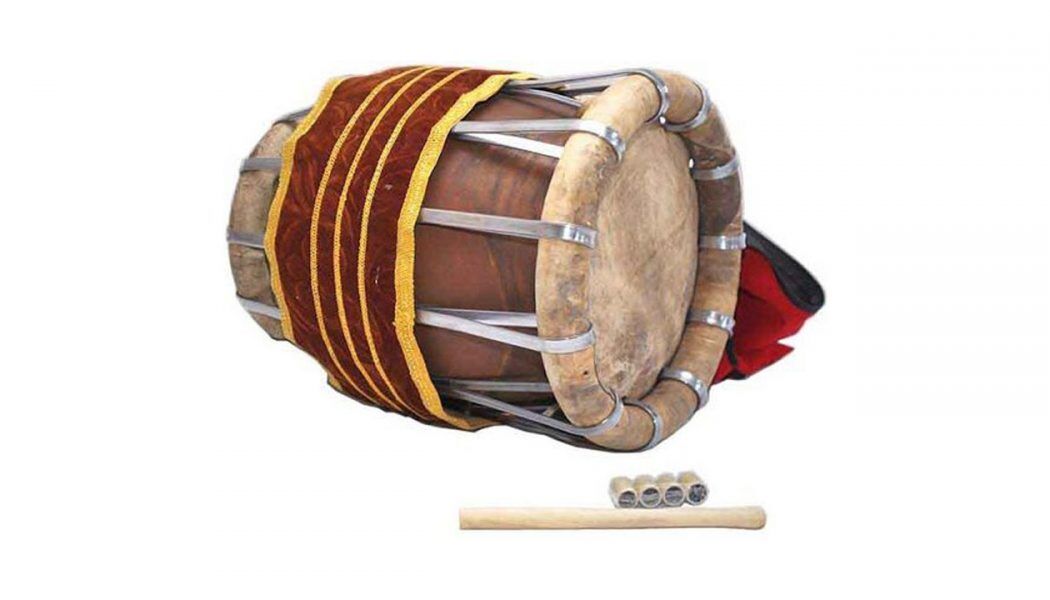Thavil or Tavil is a hand percussion instrument. It is a barrel shaped drum, having leather membranes stretched on both the open ends. Thavil is mostly used in Temples and other religious festivals along with Nadaswaram. Thavil is used to accompany Nadaswaram on Carnatic Music, Folk and other genre of music.
Construction
The Thavil is made out of a cylindrical shell which is hollowed out of a solid block of wood. Usually the wood of Jack Fruit tree is used to make the hollow barrel shaped body. The skin (leather) of water buffalo (on the right side) and goat (on the left side) are stretched across the open sides of the shell. Hemp hoops are used to attach and stretch the skins on the shell.
The right side of the Thavil is larger in diameter than the left side. The skin on the right side of Thavil is stretched very tightly and that on the left side is kept loose. This allows pitch bending on the sound produced on hitting the left side. The right side skin produces high pitches. The sides are reversed for left-handed player.
Both left and right hand side skins are tuned separately.
Playing Thavil
Thavil is played by a short and thick stick on the left side and fingers, wrist and palm on the right side. The player wears thumb caps made of hardened glue of Maida powder on all the fingers, to play the on right hand side. Usually the instrument is hung by a cloth strap from the players neck. It is also played in the sitting position during concerts as well as special occasions.
Let us now watch a short video on basic lessons on playing Thavil.
